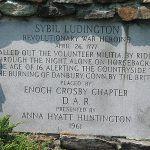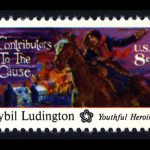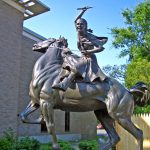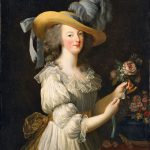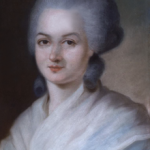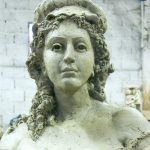Thank you all for joining us for our first episode and now our first blog post! We are excited for this new adventure! Keep reading to learn more about the two incredible women we covered this week.
Name: Sybil Ludington
Born: 1761 Died: 1839
What she did: In 1777 rode 40 miles on a rainy midnight ride to rally troops to fight during the revolution. (This is further than Paul Revere, just saying…)
Facts:
- Oldest of 12 children
- She saved her father’s life at some point before her ride by having her siblings march around in semi darkness to look like a large army which scared off the loyalist kidnappers.
- She was 16 at the time of her midnight ride.
- Father was a Colonel she was rounding up his men who had gone home for planting season when the town of Danbury asked for aid against the British
- Her ride went from about 9 am to dawn over 40 miles (almost twice as far as Paul Revere) in the rain, and when she returned most of the 400 men she called on were assembled and ready to march.
- The American militia arrived too late to save Danbury. However, the next day at the start of the Battle of Ridgefield, they were able to drive the then British governor of the colony of New York, General William Tryon, and his men to Long Island Sound.
- She was thanked by the president and later (much later, like 158 years + later) got a stamp (1975) and statues as recognition (made in 1935 and 1961)
- The ride route is now a 50 k (31 mi) ultra-marathon footrace.
- Story is disputed about whether or not it is true (we give it the Wining About Herstory truth stamp though)
Name: Olympe de Gouges (born: Marie Gouze)
Born: 1748 Died: 1793
What she did: French playwright and political activist during the enlightenment and subsequently the French Revolution whose writings on women’s rights and the rights of everyone not rich, white, male landowners reached a large audience.
Facts:
- Her best known work is an early women’s rights document that demanded that French women be given the same rights as French men, it was called the Declaration of the Rights of Woman and the Female Citizen (1791).
- She was executed by guillotine during the Reign of Terror.
- At 16 she was married off against her will to Louis Aubry, saying “I was married to a man I did not love and who was neither rich nor well-born. I was sacrificed for no reason that could make up for the repugnance I felt for this man.” He died a year later, and she never married again, calling the institution of marriage “the tomb of trust and love”.
- After her husbands death she moved to Paris and became involved with the enlightenment.
- She wrote Esclavage des Noirs (Reflections on blacks) about the slave trade and being more compassionate to slaves.
- In her semi-autobiographical novel Mémoire de Madame de Valmont contre la famille de Flaucourt, she called out her birth father for abandoning her and her mother, and the culture that allowed him to do so.
- She was arrested after she showed investigators her new play (only the first act or so was written) La France Sauvée ou le Tyran Détroné (“France Preserved, or The Tyrant Dethroned“) in which she scolds Marie Antoinette for her bad ruling. This made some view her as a Monarch loyalist.
Quotes:
“Men everywhere are equal… Kings who are just do not want slaves; they know that they have submissive subjects.”
“A woman has the right to mount the scaffold. She must possess equally the right to mount the speaker’s platform.”
“Man, are you capable of being fair? A woman is asking: at least you will allow her that right. Tell me? What gave you the sovereign right to oppress my sex?”
